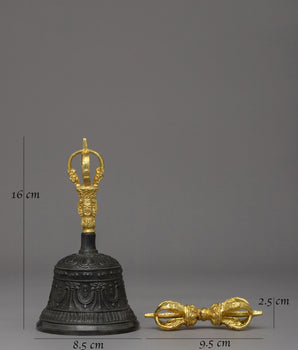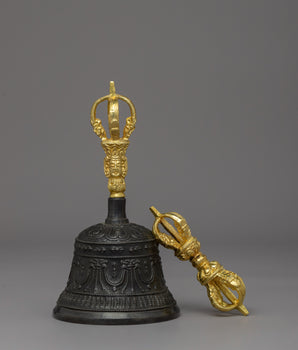Swayambhunath is a Pilgrimage of Peace and Enlightenment
Rising over the Kathmandu Valley, the Swayambhunath Stupa, commonly known as the Monkey Temple, is one of Nepal's most magnificent and sacred religious structures. The structure is characterized by the gleaming white dome and golden spire, not to mention the eyes of Buddha looking in all directions. The Stupa holds great significance, not only as a remarkable piece of architecture but as a substantial religious representation that has served as a guiding Light for worshippers for centuries. Swayambhunath dates back approximately 2000 years and is a significant shrine located on the hilltop in Kathmandu, representing two vital religions, Buddhism and Hinduism, in Nepal, as evidence of the country's ability to coexist. The present structure of the stupa was likely built around the 5th century CE, and it has undergone extensive additions and renovations over the years by many different kings and devotees. The beauty and energy provide an experience that is both enriching and effortless to remember, whether you are a pilgrim or simply a traveler with a curious mind. The views are extensive from the historic vantage point, and the peace is exceptional.
Origin and History of Swayambhunath

Swayambhunath, one of the most sacred and revered stupas located in Nepal, is storied and legendary, according to both mythology and history, and speaks powerfully to the spiritual and cultural foundations of the Nepal Mandala.
The Swayambhu Purāṇa, an ancient text on the mythological origins of Swayambhunath, states that in the time before time, the Kathmandu Valley was an enormous lake, both silent and holy. Slowly, one day, from the middle of this lake, a divine lotus flower emerged, with a self-arising radiance of Swayaṃbhu light in all directions. The bodhisattva Manjushri traveled from China to this divine radiance. Upon arrival, he understood that this valley had nirmāṇakāya potential but needed to be transcended and sustained. He drew his sword of wisdom and cut a mighty gorge through the mountains at Chobar, and the waters drained away. All remaining water vanished, and the luminous divine lotus, where it had once floated in the middle of the now-drained lake, found ground on a hill, which is now Swayambhunath, containing the eternal flame of wisdom.
This powerful myth is not only the origin of the Swayambhu, but it also represents the transformation of chaotic primordial waters into enlightenment clarity, and light piercing the dark, and plunging into wisdom. Within the cosmology and cosmogenesis of the Nepal Mandala, Swayambhu stupa is the cosmic axis that links heaven and earth, serving as the sacred center.
The historical record indicates that the earliest constructions at Swayambhunath date back to the Licchavi period in the 5th through 8th centuries CE. The inscriptions suggest that the earliest work was commissioned by King Vṛṣadeva, Licchavi king and ancestor of King Mānadeva (ca. 464–505 CE). By the 7th century, Swayambhunath was already established as a site of worship and pilgrimage.
Centuries later, during the Malla period in the 17th century, King Pratap Malla undertook a substantial renovation, establishing many of the architectural features that remain today, including the eastern stairway, stone lions, and several shrines and statues. These features not only enhanced its appearance but also its role as part of the religious life of the valley's Buddhists and Hindus.
Spiritual Significance of Swayambhunath

Swayambhunath, an ancient historical site in Nepal, is a symbol of enlightenment and a revered pilgrimage site for religious purposes. The name "Swayambhu" translates to "Self-Existent One," suggesting that wisdom and spiritual awakening have always been present. For Buddhists, the stupa represents the mind of a Buddha, and walking around it purifies negative karma, accumulates merit, and calms the mind. The 13 golden tiers on its spire represent the ascent to enlightenment, and the numerous colored eyes symbolize the Buddha's ability to see, be aware, and be compassionate. Hindus also place great reverence on other shrines at the site, such as those dedicated to Harati Devi. Swayambhunath symbolizes harmony in a country that integrates multiple religions, and it is now a place of compassion, charm, and grace. Surrounded by prayer wheels, sacred statues, and prayer flags, it is a powerful place to meditate, contemplate one's existence, and reestablish a connection to one's spirit. The stupa exists at the intersection of physical reality and non-physical existence.
Architecture Significance of the Swayambhunath
Located in Nepal, Swayambhunath Stupa is a symbol of Nepal's spiritual identity. Swayambhu Stupa features a whitewashed dome representing the universe, a square golden tower with the Buddha's all-seeing eyes, a 13-tiered spire symbolizing the levels of enlightenment, and a gilded parasol on top. Small stupas, shrines, and temples were also built in Buddhist and Hindu styles surrounding the complex. The stupa contains the Pancha Buddha or Dhayani Buddha around it. The circular path around the dome features prayer wheels inscribed with the mantra "Om Mani Padme Hum," which is primarily used by pilgrims during the ritual circumambulation of the structure. Other essential features include Tibetan monasteries, ancient chaityas, and statues of Tara, Avalokiteshvara, and Ganesh. The east approach features a dramatic stairway of 365 stone steps, which, when climbed with devotion, is believed to purify the individual who ascends them. The three-dimensional mandala auiquely invites visitors to participate as they interface with its deep spiritual meaning.
Key Shrines within Swayambhunath
In addition to the stupa at Swayambhunath, there are several other significant shrines and temples part of the main complex that exhibit the dual religions of Nepal, Buddhism and Hinduism, at work:
1. Harati Devi Temple (Ajima Temple)

Located to the northwest of the main stupa is the temple for Harati Devi, also known as Ajima Temple, the Hindu-Buddhist goddess who is believed to protect children. Harati was initially feared as a demon who would snatch children away, but was converted by the Buddha to be a protector of children. For this reason, many devotees visit this temple, praying for the health and safety of their children.
2. Shantipur

Shantipur is a small, enigmatic shrine on the western side of the hill. It allegedly belonged to an ancient yogi, who has been meditating within for hundreds of years. It is said to have esoteric tantric significance, yet the shrine is hardly ever entered, except by priests during specific rituals.
3. Vajra and Dharmadhatu

In front of the large stupa is a gold-plated vajra (thunderbolt), sitting on a Dharmadhatu representing the power to destroy ignorance and spiritual truth in the meditational path of Vajrayana Buddhism.
4. Anantapur and Pratappur

These are two shikhara-style temples, constructed by King Pratap Malla in the 17th century, located on either side of the stupa, to the north and south. They are influenced by Hindu architecture, and they venerate both Buddhist deities and Hindu deities.
5. Tibetan monasteries

At the western slope of the hill, there are several coloured Tibetan monasteries and a school for young monks that contribute to Swayambhunath's role as a living Centre in Nepal for Tibetan Buddhism.
Festivals and Rituals at Swayambhunath
Swayambhunath is the epicenter of major religious festivals and rituals throughout the year, attracting thousands of devotees and pilgrims from Nepal and beyond.
Buddha Jayanti:
Buddha Jayanti is celebrated on the full moon in May (Buddha Purnima), recognizing Siddhartha Gautama’s birth, enlightenment, and parinirvana. Illuminated decorations, butter lamps, and prayer flags illuminate the stupa. Devotees chant, meditate, and make offerings.
Gunla (Sacred Buddhist Month)

Newar Buddhists observe Gunla in August. During Gunla, devotees perform daily processions up the hill, accompanied by traditional music, instruments, and scriptures. Monasteries also have rituals and pujas, and the stupa is continuously circumambulated.
Lhosar
Lhosar is celebrated by Tibetan Buddhists, often accompanied by masked dances, rituals, and community gatherings. Lhosar creates a festive atmosphere at Swayambhunath, and the Tibetan monasteries located just outside the stupa become vibrant centers of color, flags, drumming, chanting, incense, and music.
Daily and Seasonal Rituals

(Photo From Nepal Traveller)
Monks, nuns, and lay practitioners conduct daily rituals that include circumambulating the stupa, spinning prayer wheels, lighting butter lamps, and chanting mantras. Seasonal rituals include Tara pujas and offering pujas on full moons, and permanent pujas to protectors and deities throughout the complex.
These festivals and practices exist to keep Swayambhunath as an active spiritual center, constantly revitalizing the ancient practices that have shaped it for over two thousand years.
Swayambhunath in the Modern Era

Swayambhunath is a vital spiritual site in Nepal, governed by Buddhist monastic establishments, local communities, and government agencies. The Federation of Swayambhu Management and Conservation oversees daily activities and cultural heritage, ensuring the religious significance is respected, and collaborates with relevant authorities. In 1979, Swayambhunath was inscribed on the UNESCO World Heritage List, one of seven sites in the Kathmandu Valley designated as a World Heritage site. This designation has garnered international recognition and secured funding for its preservation, thereby benefiting the site as one of the world's most significant spiritual and historical sites.
In 2015, a catastrophic earthquake damaged many temples, walls, shrines, and monasteries surrounding the stupa. Restoration projects began immediately, with the help of artisans, international aid groups, and expert assessment from UNESCO. The reconstruction of the site has restored the stupa and its surrounding areas, making them spiritually as powerful as ever.
Conclusion
Swayambhunath is more than just a stupa on a hill: it is a symbol of the eternal beating heart of Nepal’s spirituality, a site where myth and history intertwine and where the physical and metaphysical meet in tranquillity. From its mythic origins as the self-arising lotus of light to its current existence as a place of refuge for pilgrims, seekers, and casual visitors alike, it provides a space for both personal contemplation and cultural realization. The Monkey Temple embodies the living coexistence of Buddhism and Hinduism, representing Nepal’s longstanding traditions of religious tolerance and shared sacred spaces. Whether you spin the prayer wheels, climb the holy steps, admire the antiquity of the art or even just stare out across the Kathmandu Valley, and provides a great depth that reminds us wisdom, compassion and clarity can still see through the noise, just as the stupa looks out over the fort to the city.
Swayambhunath is not just a monument; it is an engagement with a spiritual journey that has been carried on for more than two thousand years, and it continues to carry your light for generations to come.











